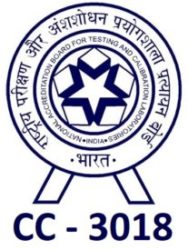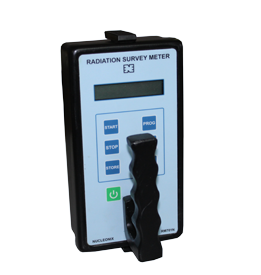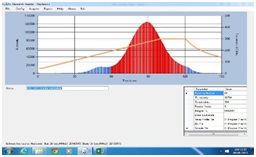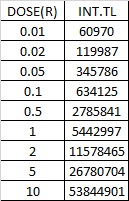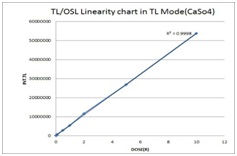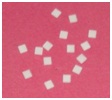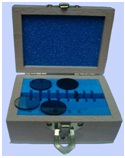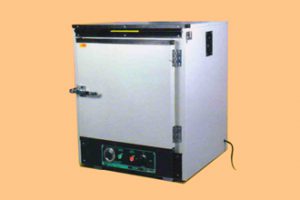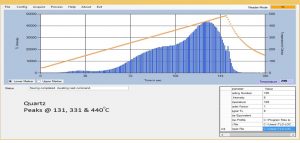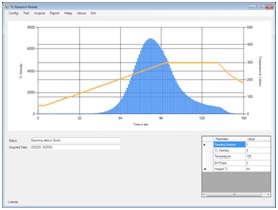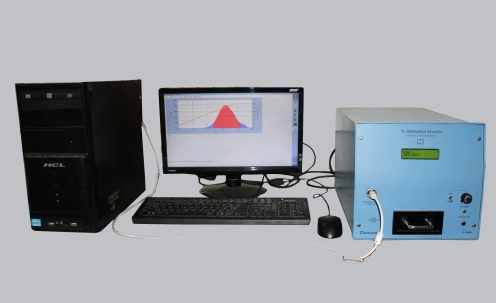TL RESEARCH READER (PHOTON COUNTER BASED) [TYPE: TL 1009P]
Technical Data

Thermo luminescence Reader Type TL1009P designed and offered by NUCLEONIX SYSTEMS is a versatile controller based unit, facilitating the user to subject the TL sample under study to the desired heating profile, to record the digitized TL glow curve. This system is designed around photon counting module which acquires TL emission in terms of photon counts compared to normal system in which PMT current is converted to frequency and counted. This unit stores both integral value and digitized glow curve into EEPROM memory.
This unit records the data in 200 channels, temp, TL intensity & Run time values. Entire electronics including Photon counting module, Temperature controller circuit, Heater transformer heater strip, sample drawer assembly, data acquisition electronics is all integrated into a single enclosure
The user interface to the unit is through a powerful software GUI, coded in .net which runs on Windows platform. This system essentially works as a PC controlled TLD reader with command buttons and dropdown menus defined for various functions.
Hardware Specifications
Photon Counting Module:
The light detection system consists of a plug-and-play photo detector package configured for photon counting. It comprises of a selected 25mm diameter end window photomultiplier tube.
Positive high voltage power supply, high speed amplifier-discriminator, counter and micro-controller. All are encapsulated within a cylindrical mu-metal case, providing a high level of immunity from the effects of external magnetic fields.
Low voltage and signal output connections to these packages are by flying leads. Three options from Electron Tubes range of 25mm end window photomultipliers are offered to cover the spectral range from UV .to IR spectral response curves. P25232/9107U70 Selected bi-alkali photomultiplier with high blue sensitivity and ultra-low dark counts. Photon Counting Module provides a fast, accurate light measurement via an RS232/Serial USB interface to a host PC.
Some of the important features are Simplicity of operation, Minimal set up time, Compact cylindrical assembly, Electrostatic and magnetic shielding, RS 232/Seral USB interface, UV window option, 100 MHz count rate capability, Automatic dead time correction, Operates from +5V supply, Pre-set discriminator level and HV are factory set for optimal performance.
Heating Arrangement:
Resistive heating method.Heating Element: (Heater Strip) Kanthal strip (72% Fe, 23% Al and 2% Cr or Nichrome) is used as a heating element. Kanthal Strip has a circular depression of 14mm to hold discs and powder samples. Additional flat heater strips can be provided on request.
Heating Process:
Programmed heating can be done in two modes: “PROG MODE” of Temp. controller through personal computer program. “ISO MODE” (Internal mode) of Temperature Controller, by varying the ten turn dial.0V.
TemperatureSensor:
Thermocouple Sensor (Cr-Al spot welded to heater strip)
Auto-Ranging:
Current output from the photo multiplier is taken to IF converter, to give frequency output proportional to PMT current. This wide dynamic range is achieved for plotting TL intensity on Y-axis.
Temperature range:
From room temperature upto 500°C, in linear, plateau heating (One / Two / Three) modes of heating can be programmed.
Heating Rates:
Heater strip can be programmed to heat the sample from 10° C / sec upto 40° C / sec and a max set temperature (allowed) is 500° C.
Arrangement for Optical Filters
One Heat absorbing glass / filter (IR cutoff filter): This is essentially an IR cut-off filter which allows only visible light and cuts off IR Radiation has been provided just below the PMT window. Additionally filters (Band pass) if required by the user may be positioned above the slot provided on the heater strip in the drawer assembly.
Nitrogen Flushing Nozzle:
From room temperature Nitrogen gas flushing (sent through a flexible rubber pipe), suppreses spurious luminescence from oxidation effects & combustion phenomena has been provided, on the rear panel side.
Dimensions of Integral unit:
25.5W X 26ht. X 48D in mm
SOFTWARE FOR TL RESEARCH READER
The software for TL Research reader is advanced, user-friendly, reliable and feature rich
Key features of Software:
APPLICATIONS:
TL Phosphor Characterization, Medical Dosimetry, Personal Monitoring Research, Archeology dating, Environmental Radiation Monitoring, Medicine, Biology, Neutron Dosimetry, Reactor Engineering, High Level Photon Dosimetry with TL materials, standardization and inter comparison of TL dosimeters used in personnel monitoring etc.
Applications in radiation oncology:
Therapy machine calibration checks & inter-comparison studies with other centres, treatment planning accuracy verification using phantoms, patient specific dosimetry, studies in Brachytherapy physics, in X-ray diagnostics to determine absorbed doses to patients & in research etc
Optional accessories :A.TL Materials & Phosphors`
(i) TL Phosphor CaSO4: Dy Powder
(ii) TL Discs CaSO4: Dy discs with Teflon base 13.5mm dia X 0.8mm thick.
(iii) LiF; Mg, Ti square chips (3.2mm x 3.2mm x 0.9mm)
(iv) Vacuum Tweezers
(v)Absorptive Neutral density filters box (EDMUND Optics) (Consisting of 0.15, 0.3, 0.4,0.6,0.9,2.5 (Optical Density).


